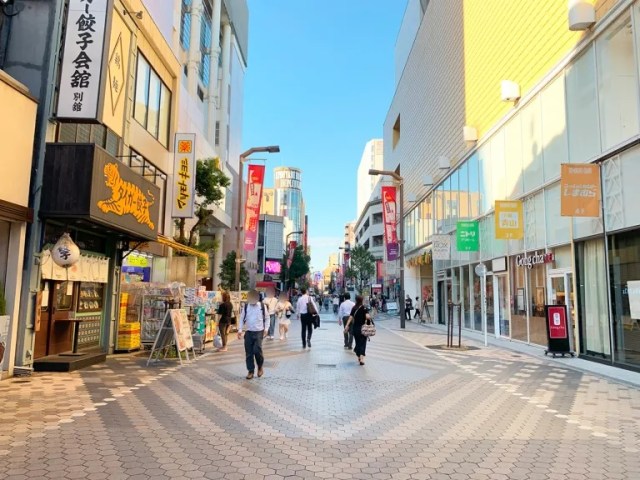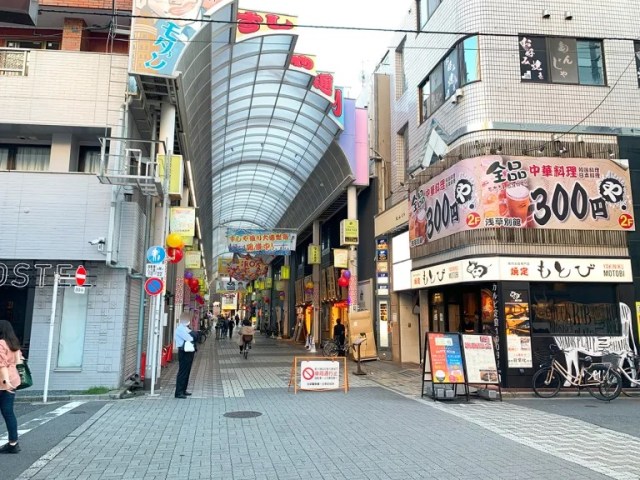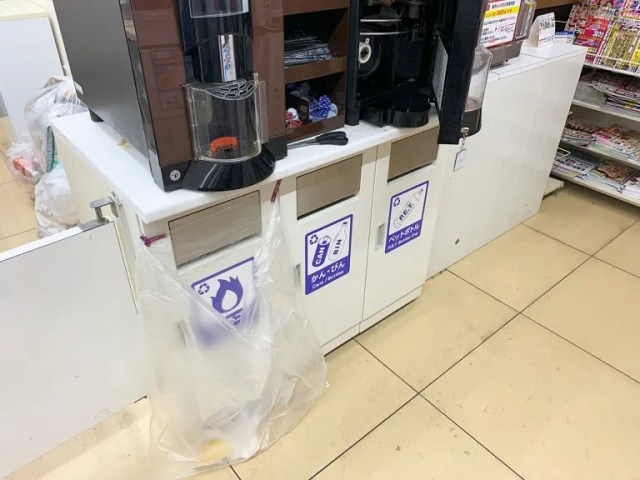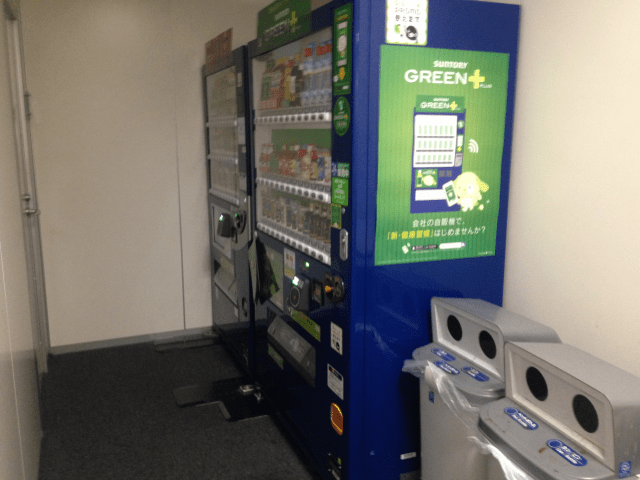
Why aren’t Japanese locals more bothered about this common complaint from overseas visitors?
Our Japanese-language reporter Seiji Nakazawa is always keen to hear what overseas visitors to Japan think of his home country, and so even when he doesn’t have a chance to talk with them directly, he like to look online to see what they have to say. Recently, he came across a common complaint from the international travel community: Japanese cities don’t have enough trash cans.
This isn’t something that exclusively irks tourists. Though you’ll see very few trash cans while out and about in Japan, they used to be more common. Though receptacles on street corners have never been all that prevalent, when Seiji was still a kid in Osaka you used to be able to reliably find trash cans throughout Japanese train and subway stations, and even he sometimes finds himself missing that convenience.
So when, and why, did station trash cans start becoming hard to find? Seiji has heard theories that many were removed in reaction to the sarin gas attacks on the Tokyo subway in 1995, which would mesh with his timeline of them becoming less common sometime between his childhood and when he became a young adult However, trash cans still weren’t all that hard to find on station platforms in Tokyo even in the early 2000s, but a new round of removals in Japan’s capital followed the Madrid train terrorist bombings in 2004.
Even this wasn’t a clean sweep, though. Instead, it’s been a sustained but gradual disappearance of station trash cans, with the same happening for on-the-street containers, bringing us to the current conditions where they’ve become rarities.
Seiji can see how this might feel like a tremendous inconvenience. He’s seen online comments from overseas travelers calling the relative lack of public trash cans in Japan “a stupid decision” and “a reason for people to litter,” and he can sympathize how it can feel like a hassle to get off an international flight and suddenly have to transition from your home country where trash cans are common to a society where they’re definitely not.
And yet, as someone living in Japan, he doesn’t feel like the lack of trash cans really causes him, or most residents, all that many problems. The major reason why is that while it can be hard to find trash cans in Japan, you usually can find them in places that are likely to generate trash.
Convenience stores and supermarkets pretty much always have trash cans. If you buy a cup of instant ramen, pack of melon bread, or some other item and consume it either in front of the store of inside its eat-in area, the store sees it as its responsibility to give you a place to throw away your trash. Likewise, at sports venues, concerts, outdoor festivals, and other events where vendors are selling food and drinks from stalls, the organizers set up trash cans too. No one is expecting you to haul your trash all the way home from the Tokyo Game Show food court, for example.
Adding in my own observations, the no-trash-cans, no-problem attitude of many Japanese people is also tied into Japanese eating etiquette. It’s generally considered poor manners to eat while walking or riding the train, so the vast majority of Japanese people will wait until they’re back at their home, office, or hotel to eat any takeout food they’ve picked up, and once they’re at one of those places, they don’t need a public trash can.
Drinking a beverage while on the move is usually acceptable, but in this case Japan’s ubiquitous vending machines come to the rescue. Similar to convenience stores, vending machines are trash generators, so most operators also set up a can/bottle recycling box next to their machine, and you’re never all that far from a vending machine in a Japanese city. The general attitude is that it’s OK to throw away a container from a drink you bought at one machine in another machine’s recycling box. Dumping in a bunch of empty cans you brought from home is a no-no, but for a single incidental can here and there, the logic seems to be that the deposits will all more or less balance out.
Another factor that can’t be ignored is the fact that pretty much everyone in Japan, men and women, young and old, carries a bag of some sort when they go out, whether a purse, backpack, messenger bag, or some other style. Since they’re carrying these as part of their daily routine, most people pick a bag that’s large enough to carry their essentials without being stuffed to bursting, which leaves them with enough space to put a candy wrapper, empty drink bottle, or whatever other incidental trash they’ve accumulated until either they do eventually come across a trash can or they’re back home for the day. That does still leave the potential problem of what to do with sticky or otherwise dirty trash that you don’t want soiling the inside of your bag. For most Japanese people, though, this isn’t an issue, going back to the idea that you shouldn’t be walking around eating messy foodstuffs in the first place.
All that said, if you’re not adhering 100-percent to local customs, you might find yourself with something like a sauce-stained takoyaki tray or sweet bean paste-smeared taiyaki wrapper from a snacking-while-walking session. Having succumbed to such temptations myself, I’ve gotten in the habit of always keeping a few plastic sandwich bags inside my bag when I’m going out. They weigh practically nothing and take up a negligible amount of space, and if you’re visiting from overseas and forgot to pack some, you can buy them, cheaply, in just about any convenience store or 100 yen shop. Any dirty trash I end up with when there’s no trash can around gets put into a sandwich bag, tied shut, and tossed into my bag to take home.
I’ll admit it’s a hassle, but it’s a very, very tiny hassle, and totally worth it to solve one of the most common complaints about traveling in Japan.
Photos ©SoraNews24
● Want to hear about SoraNews24’s latest articles as soon as they’re published? Follow us on Facebook and Twitter!
[ Read in Japanese ]




 Travel tip: 100 yen shop solves the “What do I do with my trash?” problem visitors face in Japan
Travel tip: 100 yen shop solves the “What do I do with my trash?” problem visitors face in Japan Kyoto merchants want city to install more trash cans to fight litter in historic neighborhood
Kyoto merchants want city to install more trash cans to fight litter in historic neighborhood Tokyo considering law requiring more trash cans following litter increase in heavily touristed area
Tokyo considering law requiring more trash cans following litter increase in heavily touristed area Tiny Tokyo apartment lifehack: How to stop trash stank on a hot summer day
Tiny Tokyo apartment lifehack: How to stop trash stank on a hot summer day Our reporter eats more bugs from a Tokyo vending machine, compares flavors【Taste test】
Our reporter eats more bugs from a Tokyo vending machine, compares flavors【Taste test】 Cup Noodle tries an authentic Jiro-style ramen, but something’s not quite right
Cup Noodle tries an authentic Jiro-style ramen, but something’s not quite right What did Shibuya really look like after the crowds on New Year’s Day?
What did Shibuya really look like after the crowds on New Year’s Day? Pizza Hut Japan’s hot lucky bags are perfect for a New Year’s pizza party
Pizza Hut Japan’s hot lucky bags are perfect for a New Year’s pizza party The best Starbucks Japan Frappuccinos we want to drink again in 2026
The best Starbucks Japan Frappuccinos we want to drink again in 2026 Studio Ghibli unveils My Neighbour Totoro miniature house model
Studio Ghibli unveils My Neighbour Totoro miniature house model Starbucks Japan ready to get Year of the Horse started with adorable drinkware and plushies【Pics】
Starbucks Japan ready to get Year of the Horse started with adorable drinkware and plushies【Pics】 New form of luxurious poverty arrives at Japanese convenience stores with Tenkasu Gohan
New form of luxurious poverty arrives at Japanese convenience stores with Tenkasu Gohan Cats in bowls, buckets and boxes: smile guaranteed!
Cats in bowls, buckets and boxes: smile guaranteed! Believe it or not, this isn’t a Tokyo vending machine – It’s a secret door to deliciousness
Believe it or not, this isn’t a Tokyo vending machine – It’s a secret door to deliciousness Step into Japanese culture with Converse’s new Japan-exclusive shoes featuring gods, sushi style
Step into Japanese culture with Converse’s new Japan-exclusive shoes featuring gods, sushi style 7 great places to see Mt. Fuji from without having to climb it
7 great places to see Mt. Fuji from without having to climb it Cyberpunk anime meets traditional culture in Ghost in the Shell gold leaf Japanese changing screens
Cyberpunk anime meets traditional culture in Ghost in the Shell gold leaf Japanese changing screens Hayao Miyazaki says Happy New Year to Studio Ghibli fans with new art for Year of the Horse
Hayao Miyazaki says Happy New Year to Studio Ghibli fans with new art for Year of the Horse Hello Kitty Choco Egg figures are an adorable trip through three periods of Japanese pop culture【Pics】
Hello Kitty Choco Egg figures are an adorable trip through three periods of Japanese pop culture【Pics】 We found possibly the quietest Japanese-style hotel in Tokyo’s bustling Shinjuku district
We found possibly the quietest Japanese-style hotel in Tokyo’s bustling Shinjuku district 7-Eleven Japan’s ramen-cooking robot whipped us up a bowl of noodles【Taste test】
7-Eleven Japan’s ramen-cooking robot whipped us up a bowl of noodles【Taste test】 Sumo Sanrio! Hello Kitty and pals team up with Japan Sumo Association for new merch【Pics】
Sumo Sanrio! Hello Kitty and pals team up with Japan Sumo Association for new merch【Pics】 Japan’s oldest largetooth sawfish in captivity back on display in Mie Prefecture
Japan’s oldest largetooth sawfish in captivity back on display in Mie Prefecture More Than a Capsule Stay: Why Solo Travelers Choose “global cabin Yokohama Chinatown”
More Than a Capsule Stay: Why Solo Travelers Choose “global cabin Yokohama Chinatown” 7-Eleven Japan starts new temporary luggage storage service in over 300 branches
7-Eleven Japan starts new temporary luggage storage service in over 300 branches Disillusionment at Tsukiji’s tourist-target prices led us to a great ramen restaurant in Tokyo
Disillusionment at Tsukiji’s tourist-target prices led us to a great ramen restaurant in Tokyo Starbucks teams up with 166-year-old Kyoto doll maker for Year of the Horse decorations【Photos】
Starbucks teams up with 166-year-old Kyoto doll maker for Year of the Horse decorations【Photos】 Tokyo considering law requiring more trash cans following litter increase in heavily touristed area
Tokyo considering law requiring more trash cans following litter increase in heavily touristed area Tokyo’s Tsukiji sushi neighborhood asks tour groups to stay away for the rest of the month
Tokyo’s Tsukiji sushi neighborhood asks tour groups to stay away for the rest of the month Tokyo event lets you travel back in time, for free, to celebrate 100 years since Showa era start
Tokyo event lets you travel back in time, for free, to celebrate 100 years since Showa era start Sanrio theme park in Japan announces plans to expand into a Sanrio resort
Sanrio theme park in Japan announces plans to expand into a Sanrio resort Japan may add Japanese language proficiency, lifestyle classes to permanent foreign resident requirements
Japan may add Japanese language proficiency, lifestyle classes to permanent foreign resident requirements Stamina-destroying “Paralysis Noodles” are Tokyo’s newest over-the-top ramen innovation
Stamina-destroying “Paralysis Noodles” are Tokyo’s newest over-the-top ramen innovation Survey asks foreign tourists what bothered them in Japan, more than half gave same answer
Survey asks foreign tourists what bothered them in Japan, more than half gave same answer Japan’s human washing machines will go on sale to general public, demos to be held in Tokyo
Japan’s human washing machines will go on sale to general public, demos to be held in Tokyo Japan’s deadliest food claims more victims, but why do people keep eating it for New Year’s?
Japan’s deadliest food claims more victims, but why do people keep eating it for New Year’s? We deeply regret going into this tunnel on our walk in the mountains of Japan
We deeply regret going into this tunnel on our walk in the mountains of Japan Studio Ghibli releases Kodama forest spirits from Princess Mononoke to light up your home
Studio Ghibli releases Kodama forest spirits from Princess Mononoke to light up your home Major Japanese hotel chain says reservations via overseas booking sites may not be valid
Major Japanese hotel chain says reservations via overseas booking sites may not be valid Put sesame oil in your coffee? Japanese maker says it’s the best way to start your day【Taste test】
Put sesame oil in your coffee? Japanese maker says it’s the best way to start your day【Taste test】 No more using real katana for tourism activities, Japan’s National Police Agency says
No more using real katana for tourism activities, Japan’s National Police Agency says Starbucks Japan reveals new sakura drinkware collection, inspired by evening cherry blossoms
Starbucks Japan reveals new sakura drinkware collection, inspired by evening cherry blossoms Updated cherry blossom forecast shows extra-long sakura season for Japan this year
Updated cherry blossom forecast shows extra-long sakura season for Japan this year Our reporter Seiji gets a weird package from overseas, meets a friend he didn’t know he had
Our reporter Seiji gets a weird package from overseas, meets a friend he didn’t know he had Tokyo adding new anti-littering fines in Shibuya and Harajuku, will require more trash cans too
Tokyo adding new anti-littering fines in Shibuya and Harajuku, will require more trash cans too What did Shibuya really look like after the crowds on New Year’s Day?
What did Shibuya really look like after the crowds on New Year’s Day? The almost immediate problems on our almost no-plan trip to Yakushima
The almost immediate problems on our almost no-plan trip to Yakushima Our 40-year-old reporter tries muscat grapes for the first time, conquers childhood trauma
Our 40-year-old reporter tries muscat grapes for the first time, conquers childhood trauma Our street food-skipping reporter learns he’s been doing Japanese festivals wrong his whole life
Our street food-skipping reporter learns he’s been doing Japanese festivals wrong his whole life The Japanese art of making trash containers from old papers
The Japanese art of making trash containers from old papers Our lonely reporter goes searching for Japan’s search-for-a-spouse vending machine
Our lonely reporter goes searching for Japan’s search-for-a-spouse vending machine This ridiculously huge backpack turned our reporter into a great big baby【Photos】
This ridiculously huge backpack turned our reporter into a great big baby【Photos】 Our Japanese reporter tries Palestinian food for the first time in Tokyo【Taste test】
Our Japanese reporter tries Palestinian food for the first time in Tokyo【Taste test】 On-site coverage of the 2025 Osaka-Kansai Expo from our reporter’s mother
On-site coverage of the 2025 Osaka-Kansai Expo from our reporter’s mother Visiting Ueno Zoo for the first time as an adult shows our reporter the true appeal of the place
Visiting Ueno Zoo for the first time as an adult shows our reporter the true appeal of the place Our Japanese reporter eats instant ramen from a bag for (almost) the first time in his life
Our Japanese reporter eats instant ramen from a bag for (almost) the first time in his life The must-have item to avoid being a jerk at Tokyo’s biggest Halloween street party
The must-have item to avoid being a jerk at Tokyo’s biggest Halloween street party Our otaku reporter Seiji rides the slowest train to Chichibu–and his coworker flips out
Our otaku reporter Seiji rides the slowest train to Chichibu–and his coworker flips out Tokyo restaurant doesn’t tell you its name unless you ask, makes us appreciate life’s surprises
Tokyo restaurant doesn’t tell you its name unless you ask, makes us appreciate life’s surprises
Leave a Reply